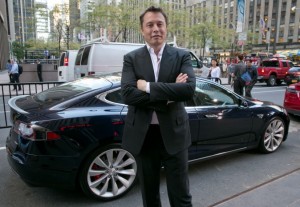In present globalized world the notion of partnership and its advantages seem no more surprising. In fact, partnership on all levels, including public and private has always been part of our history. Governments establish partnerships and change their respective legislations in order to gain mutual benefits, companies create alliances to gain bigger market shares and so on. Most of the partnerships establish their relations based on the common interests within an industry and there are thousands of examples for those. But what about partnerships that do not seem to be visible and understandable on the surface? It’s remarkable, that these kind of partnerships are often the most fruitful, since they trigger unexpected and revolutionary changes. To illustrate this kind of partnership, I would like to refer to the up and coming player in the automotive industry – Tesla, famous for its fuel-efficient, electric car vehicles and top search engine leader in the world – Google. When looking closer at the recent developments in both companies, it becomes clear, that both Google and Tesla has been investing heavily in the development of driverless technology, and certainly, the partnership between the two would bring the revolutionary changes to the industry, if not to say, will create a new industry.
But before, a little bit about Tesla. Tesla Motors Inc. was established in Silicon Valley in 2003 with the long-term goal to create affordable mass market electric vehicles. Tesla builds and sells its own cars, but unlike many traditional manufacturers it also operates as an original equipment manufacturer, producing electric vehicle power train components that other automakers may purchase and retail under their own brand names. What is notable, that when company began in 2003, they licensed AC Propulsion’s Reductive Charging patent, but shortly after developing their own power train well beyond the one they have licensed, company terminated the contract with AC Propulsion. Further, Tesla has established a partnership with Panasonic as a partner in battery cell research and development (Reuters).
Since Tesla acted as an original equipment manufacturer, it caught interest on behalf of 2 other industry giants – Daimler and Toyota. In 2007, Daimler started working closely to integrate Tesla’s lithium-ion batteries and charging electronics into their electric smart and Mercedes A class cars. In 2009 this partnership went further, as Daimler acquired 10% in Tesla and its Vice-President took a seat on Tesla’s board of directors (M. Arlington). The things went a little different with Toyota. In 2010, the companies announced a partnership to work on electric vehicle development, including future investments from Toyota (Tesla press release, 2010). This partnership was strategic for both sides. For Toyota, the number one reason was that Tesla’s sport model was twice as efficient as Toyota’s famous Prius model. On the other hand, Tesla’s Factory in Fremont, California was an assembly plant that belonged to Toyota and General Motors, in which Tesla had a stake.
In 2010, Tesla hired former Apple and Gap retailing Guru to build Tesla’s retail strategy and network of retail locations worldwide (San Jose Mercury news, 2010). The company’s overall strategy to create mutually beneficial partnerships together with receiving equity investments from competing industries and beyond avails them grow faster and fiercely invest in innovation. In spite of trying to “invent the wheel”, they create partnerships and take the best available know-how in order to create synergies.

The All-Star SpaceX billionaire founder and Tesla Motors CEO Elon Musk poses beside a Tesla in New York, Wednesday, Sept. 17, 2014. (AP Photo/Richard Drew)
Getting back to the cross-industrial partnership between Tesla and Google, the latter has also gained a stock share in Tesla. According to Bloomberg, the two companies are discussing prospects of cooperation on creating self-pilot cars. Up to this moment, Google has already developed driverless fleet on Toyota Prius hybrids equipped with laser-radar devices. Tesla’s CEO called this technology too expensive suggesting that the cooperation between the two is “one of the possible outcomes”. He also called the driverless technology as a ‘logical step in the evolution of the cars” (Alan Ohnsman). This possible future cooperation may revolutionize the industry and prove the partnership as one of the most successful. Although there seems to be no end to cooperation for Tesla. In case of success with driverless technologies, the next step for the company would be establishment of partnerships with State Governments in order to change their legislations, letting driverless cars on roads…
References:
Bloomberg, Alan Ohnsman, 2014. Tesla CEO Talking With Google About ‘Autopilot’ Systems retrieved from http://www.bloomberg.com/news/2013-05-07/tesla-ceo-talking-with-google-about-autopilot-systems.html
Reuters, 2010. Tesla, Panasonic partner on electric car batteries retrieved from http://www.reuters.com/article/2010/01/07/tesla-panasonic-idUSN0721766720100107
San Jose Mercury News, Patrick May, 2010 . Tesla stores to borrow from Apple’s magic retrieved from http://www.mercurynews.com/ci_15478680
Press-release, May 2010. Tesla Motors and Toyota Motor Corporation intend to work jointly on EV development, TMC to invest in Tesla retrieved from http://www.teslamotors.com/about/press/releases/tesla-motors-and-toyota-motor-corporation-intend-work-jointly-ev-development-tm
TechCrunch, Michael Arrington, 2009 .Tesla Worth More Than Half A Billion Dollars After Daimler Investment retrieved from http://techcrunch.com/2009/05/19/tesla-worth-a-half-billion-dollars-after-daimler-investment/
